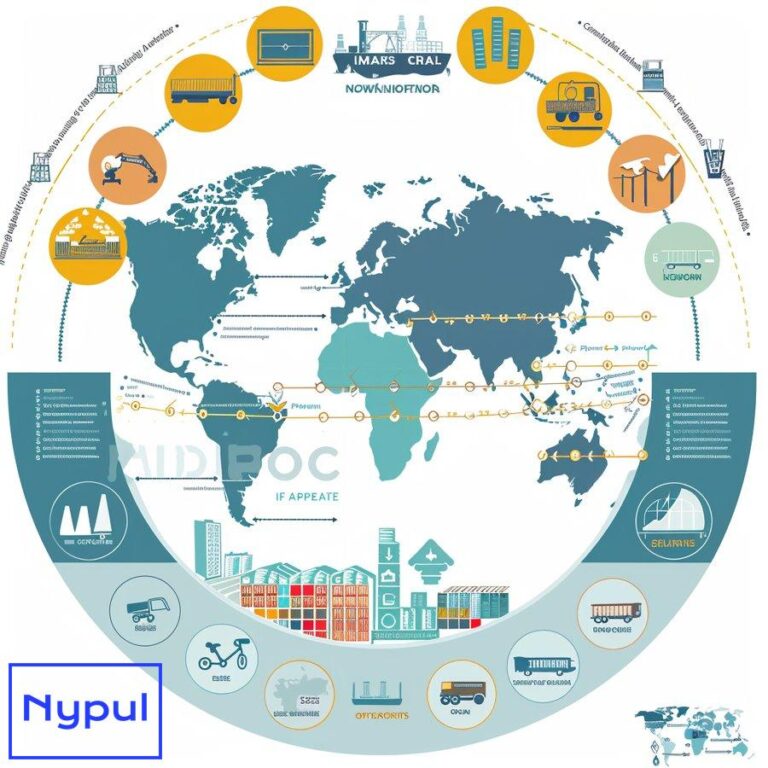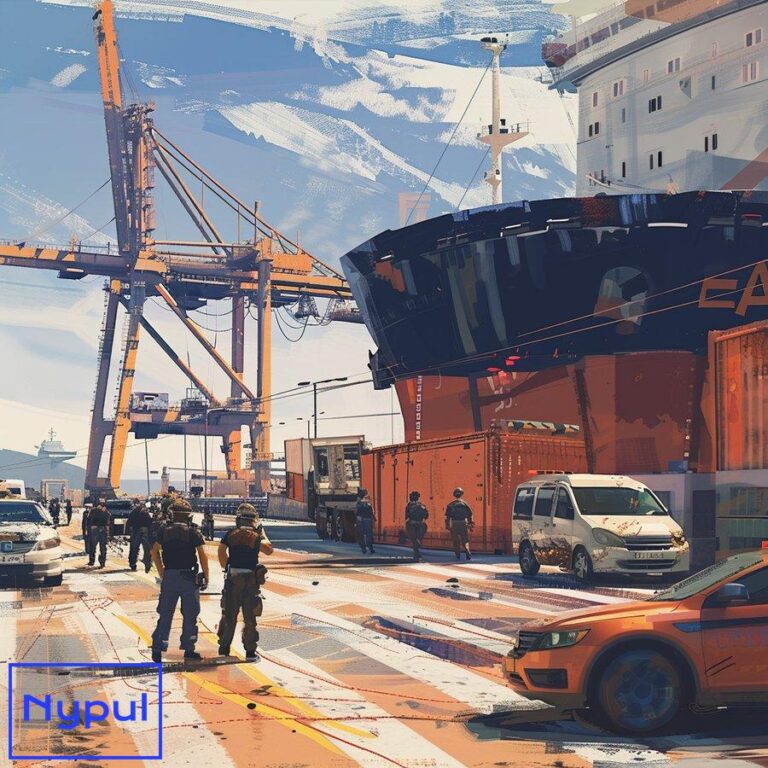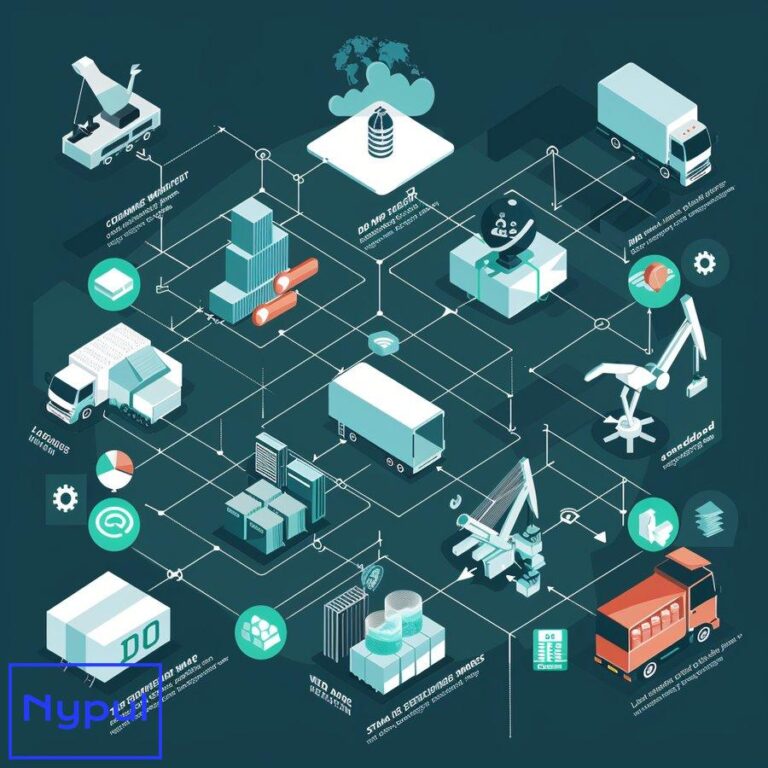What Is Drayage Management
What is Drayage Management and Why is it Important?
Drayage management refers to the process of overseeing and coordinating the short-distance transportation of goods, typically within a single urban area or between nearby facilities. This specialized logistics function focuses on moving cargo over short distances, often connecting different modes of transportation such as ports, rail yards, and distribution centers.
The importance of drayage management cannot be overstated in the context of modern supply chains. As global trade continues to expand and consumer expectations for rapid delivery intensify, efficient drayage operations have become a linchpin in ensuring smooth cargo flow and minimizing bottlenecks.

The Drayage Process
Drayage involves several steps, each requiring careful coordination:
- Pickup: Retrieving containers or cargo from a port, rail yard, or other facility
- Transportation: Moving the goods over short distances, usually by truck
- Delivery: Dropping off the cargo at its destination, such as a warehouse or distribution center
- Documentation: Managing paperwork and electronic records associated with the movement
Effective drayage management ensures these steps are executed seamlessly, minimizing delays and maximizing efficiency.
Impact on Supply Chain Efficiency
Drayage management directly influences the overall efficiency of the supply chain. When managed effectively, it:
- Reduces transit times
- Minimizes cargo handling and potential damage
- Optimizes resource utilization, including trucks and drivers
- Enhances inventory management by ensuring timely deliveries
To illustrate the impact of efficient drayage management, consider the following example:
| Scenario | Average Drayage Time | Daily Throughput | Monthly Cost Savings |
|---|---|---|---|
| Inefficient Management | 4 hours | 50 containers | – |
| Efficient Management | 2 hours | 100 containers | $50,000 |
In this example, efficient drayage management doubles the daily throughput and results in significant monthly cost savings.
Environmental Considerations
Drayage management also plays a role in reducing the environmental impact of logistics operations. By optimizing routes, reducing idle time, and improving overall efficiency, effective drayage management can lead to:
- Lower fuel consumption
- Reduced emissions
- Decreased traffic congestion in urban areas
These environmental benefits align with growing corporate sustainability initiatives and regulatory requirements, making drayage management an essential component of eco-friendly logistics strategies.
Risk Mitigation
Another critical aspect of drayage management is its role in risk mitigation. Effective management practices help:
- Prevent cargo theft
- Reduce the likelihood of accidents
- Ensure compliance with local regulations and port policies
- Minimize demurrage and detention charges
By addressing these potential risks, drayage management contributes to the overall reliability and cost-effectiveness of the supply chain.
In conclusion, drayage management is a vital component of modern logistics operations. Its importance lies in its ability to streamline the movement of goods over short distances, connecting various transportation modes and facilities. By optimizing this critical link in the supply chain, businesses can enhance efficiency, reduce costs, minimize environmental impact, and mitigate risks associated with cargo movement.
How Does Drayage Management Fit into the Overall Supply Chain?
Drayage management serves as a critical link in the overall supply chain, connecting various modes of transportation and facilitating the smooth flow of goods from origin to destination. Understanding its role within the broader context of supply chain management is essential for optimizing logistics operations and enhancing overall efficiency.

The Supply Chain Ecosystem
The supply chain encompasses all activities involved in the production and distribution of goods, from raw material sourcing to final delivery to the end consumer. Within this ecosystem, drayage management occupies a unique position:
- It bridges gaps between long-haul transportation modes
- It facilitates the movement of goods through intermodal hubs
- It supports just-in-time inventory management strategies
- It enables efficient cargo consolidation and deconsolidation
Intermodal Connectivity
One of the primary functions of drayage management in the supply chain is to provide seamless connectivity between different modes of transportation. This intermodal connectivity is essential for global trade, where goods often travel by sea, rail, and road before reaching their final destination.
For example, consider the journey of a shipping container from Asia to a distribution center in the Midwest United States:
- Ocean freight from Asian port to U.S. West Coast port
- Drayage from port to nearby rail yard
- Rail transport to Midwest intermodal facility
- Drayage from rail yard to distribution center
In this scenario, drayage management ensures the efficient transfer of the container between ocean, rail, and final truck transportation, minimizing delays and optimizing the overall transit time.
Last-Mile Delivery Support
Drayage management also plays a role in supporting last-mile delivery operations, particularly in urban areas. As e-commerce continues to grow, the demand for efficient last-mile logistics has intensified. Drayage services can facilitate:
- Movement of goods from distribution centers to urban fulfillment centers
- Consolidation of shipments for more efficient urban delivery
- Coordination with local delivery services for final distribution
By effectively managing these short-distance movements, drayage operations contribute to faster and more cost-effective last-mile delivery, enhancing the overall customer experience.
Inventory Management Impact
Efficient drayage management directly influences inventory management strategies within the supply chain. By ensuring timely and reliable short-distance transportation, it enables:
- Just-in-time inventory practices
- Reduced warehouse space requirements
- Improved inventory turnover rates
- Enhanced ability to respond to demand fluctuations
To illustrate the impact of drayage on inventory management, consider the following comparison:
| Scenario | Average Drayage Time | Inventory Turnover Rate | Warehouse Space Required |
|---|---|---|---|
| Inefficient Drayage | 48 hours | 8 times/year | 100,000 sq ft |
| Efficient Drayage | 24 hours | 12 times/year | 75,000 sq ft |
In this example, efficient drayage management leads to faster inventory turnover and reduced warehouse space requirements, resulting in significant cost savings and improved operational efficiency.
Supply Chain Visibility
Drayage management contributes to enhanced supply chain visibility by providing real-time information on the movement of goods over short distances. This visibility is crucial for:
- Accurate tracking of shipments
- Proactive identification and resolution of potential delays
- Improved decision-making throughout the supply chain
- Enhanced customer service through accurate delivery estimates
By integrating drayage management systems with broader supply chain visibility platforms, companies can gain a comprehensive view of their logistics operations, from long-haul transportation to final delivery.
Cost Optimization
Effective drayage management can significantly impact overall supply chain costs. By optimizing short-distance transportation, companies can:
- Reduce transportation expenses
- Minimize demurrage and detention charges
- Improve asset utilization, including trucks and containers
- Decrease labor costs through improved efficiency
These cost savings contribute to the overall competitiveness of the supply chain, allowing companies to offer better pricing to customers or reinvest in further operational improvements.
In conclusion, drayage management is an integral component of the overall supply chain, serving as a critical link between various transportation modes and facilitating efficient cargo movement. Its impact extends beyond short-distance transportation, influencing inventory management, last-mile delivery, supply chain visibility, and overall cost optimization. By recognizing the importance of drayage management and integrating it effectively within their supply chain strategies, companies can enhance their operational efficiency and gain a competitive edge in the global marketplace.
What Are the Key Components of Effective Drayage Management?
Effective drayage management requires a comprehensive approach that addresses various aspects of short-distance transportation operations. Understanding and optimizing these components is essential for achieving efficient, cost-effective, and reliable drayage services within the broader supply chain context.
Planning and Scheduling

Efficient planning and scheduling form the foundation of effective drayage management. This component involves:
- Forecasting demand for drayage services
- Allocating resources, including trucks and drivers
- Optimizing routes to minimize travel time and fuel consumption
- Coordinating with other supply chain partners, such as ports and rail yards
Advanced planning and scheduling systems can significantly enhance drayage operations by:
- Reducing empty miles
- Improving asset utilization
- Minimizing wait times at pickup and delivery locations
- Ensuring timely cargo movement to meet customer expectations
Fleet Management
Effective fleet management is crucial for drayage operations. This component encompasses:
- Vehicle maintenance and repair scheduling
- Fuel management and efficiency monitoring
- Driver assignment and performance tracking
- Compliance with safety regulations and industry standards
Implementing a robust fleet management system can lead to:
- Reduced vehicle downtime
- Improved fuel efficiency
- Enhanced driver productivity
- Increased overall operational reliability
To illustrate the impact of effective fleet management on drayage operations, consider the following comparison:
| Metric | Without Fleet Management | With Fleet Management |
|---|---|---|
| Vehicle Uptime | 85% | 95% |
| Fuel Efficiency | 6 miles per gallon | 7 miles per gallon |
| Driver Productivity | 6 deliveries per day | 8 deliveries per day |
| Maintenance Costs | $0.15 per mile | $0.10 per mile |
This example demonstrates how implementing effective fleet management practices can lead to significant improvements in operational efficiency and cost reduction.
Technology Integration
Integrating advanced technologies is essential for modern drayage management. Components include:
- GPS tracking and real-time visibility systems
- Electronic logging devices (ELDs) for hours of service compliance
- Mobile applications for drivers and dispatchers
- Automated dispatch and routing software
These technologies enable:
- Real-time tracking of cargo and vehicles
- Improved communication between drivers, dispatchers, and customers
- Enhanced data collection for performance analysis and optimization
- Streamlined documentation and paperwork processes
Capacity Management
Effective capacity management ensures that drayage resources are utilized efficiently to meet demand. This component involves:
- Analyzing historical data to predict future capacity needs
- Balancing workload across available resources
- Identifying and addressing capacity constraints
- Developing strategies for handling peak demand periods
Implementing robust capacity management practices can lead to:
- Improved asset utilization
- Reduced operational costs
- Enhanced ability to meet customer demand
- Increased flexibility in responding to market fluctuations
Performance Monitoring and Analytics
Continuous performance monitoring and analytics are crucial for identifying areas of improvement and optimizing drayage operations. This component includes:
- Tracking key performance indicators (KPIs) such as on-time delivery rates and cost per mile
- Analyzing data to identify trends and patterns
- Benchmarking performance against industry standards
- Implementing continuous improvement initiatives based on data insights
Effective performance monitoring enables:
- Proactive identification of operational issues
- Data-driven decision-making for resource allocation
- Continuous optimization of drayage processes
- Enhanced accountability and transparency in operations
Regulatory Compliance and Documentation
Ensuring compliance with regulatory requirements and managing documentation are essential components of drayage management. This involves:
- Staying up-to-date with local, state, and federal regulations
- Maintaining accurate records of driver hours, vehicle inspections, and cargo movements
- Managing customs documentation for international shipments
- Ensuring proper handling of hazardous materials and other specialized cargo
Effective compliance and documentation management:
- Reduces the risk of fines and penalties
- Streamlines border crossings and customs clearance processes
- Enhances overall operational reliability
- Builds trust with customers and regulatory authorities
Customer Service and Communication
Providing excellent customer service and maintaining clear communication channels are vital components of effective drayage management. This includes:
- Offering real-time tracking and status updates to customers
- Providing accurate estimated arrival times
- Promptly addressing customer inquiries and concerns
- Developing strong relationships with supply chain partners
Focusing on customer service and communication leads to:
- Increased customer satisfaction and loyalty
- Improved coordination with other supply chain stakeholders
- Enhanced reputation in the industry
- Potential for business growth through positive referrals
In conclusion, effective drayage management requires a holistic approach that addresses planning and scheduling, fleet management, technology integration, capacity management, performance monitoring, regulatory compliance, and customer service. By optimizing these components, drayage providers can enhance their operational efficiency, reduce costs, and provide reliable services that contribute to the overall success of the supply chain.
What Challenges Do Drayage Operations Face and How Can They Be Overcome?
Drayage operations encounter various challenges that can impact efficiency, cost-effectiveness, and overall performance. Understanding these challenges and implementing effective solutions is crucial for maintaining smooth drayage operations within the supply chain.

Port Congestion
Port congestion is a significant challenge facing drayage operations, particularly in major shipping hubs.
Causes:
1. Increasing vessel sizes leading to larger cargo volumes
2. Limited port infrastructure and capacity
3. Labor shortages or disputes
4. Weather-related disruptions
Impact:
1. Extended wait times for trucks at port terminals
2. Increased operational costs due to idle time
3. Delayed deliveries and potential supply chain disruptions
Solutions:
1. Implementing appointment systems for truck arrivals
2. Extending port operating hours to spread out traffic
3. Investing in port automation and infrastructure improvements
4. Developing inland ports and off-dock container yards
Driver Shortages
The ongoing shortage of qualified truck drivers poses a significant challenge to drayage operations.
Causes:
1. Aging workforce and retirements
2. Challenging working conditions and lifestyle
3. Competitive job market with alternative career options
4. Stringent licensing and regulatory requirements
Impact:
1. Reduced operational capacity
2. Increased labor costs due to competition for drivers
3. Potential service delays and reliability issues
Solutions:
1. Offering competitive wages and benefits packages
2. Implementing driver retention programs and career development opportunities
3. Exploring automation and semi-autonomous vehicle technologies
4. Partnering with vocational schools and training programs to attract new drivers
Equipment Availability and Chassis Shortages
Shortages of essential equipment, particularly chassis, can significantly impact drayage operations.
Causes:
1. Imbalances in equipment distribution
2. Increased dwell times at terminals and warehouses
3. Lack of investment in new equipment
4. Inefficient chassis management systems
Impact:
1. Delays in picking up and delivering containers
2. Increased operational costs due to chassis rental fees
3. Reduced productivity and asset utilization
Solutions:
1. Implementing chassis pools and neutral management systems
2. Investing in technology for real-time chassis tracking and allocation
3. Encouraging collaboration between stakeholders to optimize chassis utilization
4. Exploring alternative chassis ownership and management models
Regulatory Compliance
Navigating complex and evolving regulatory requirements presents ongoing challenges for drayage operations.
Challenges:
1. Hours of Service (HOS) regulations limiting driver availability
2. Environmental regulations, including emissions standards
3. Safety compliance and vehicle inspection requirements
4. Customs and border crossing regulations for international shipments
Impact:
1. Increased operational complexity and administrative burden
2. Potential fines and penalties for non-compliance
3. Reduced operational flexibility due to regulatory constraints
Solutions:
1. Implementing comprehensive compliance management systems
2. Providing ongoing training and education for drivers and staff
3. Investing in technology solutions for automated compliance monitoring
4. Engaging with industry associations to stay informed about regulatory changes
Technology Integration and Data Management
While technology offers numerous benefits, integrating and managing various systems can be challenging for drayage operations.
Challenges:
1. Incompatible systems between different stakeholders
2. Data quality and accuracy issues
3. Cybersecurity concerns and data protection requirements
4. Resistance to change and technology adoption among staff
Impact:
1. Inefficient information flow and communication breakdowns
2. Missed opportunities for optimization and cost reduction
3. Increased risk of errors and operational disruptions
Solutions:
1. Implementing standardized data exchange protocols and APIs
2. Investing in comprehensive training programs for technology adoption
3. Developing robust cybersecurity measures and data governance policies
4. Fostering a culture of innovation and continuous improvement
Fluctuating Demand and Capacity Management
Balancing capacity with fluctuating demand poses ongoing challenges for drayage operations.
Challenges:
1. Seasonal variations in shipping volumes
2. Economic fluctuations impacting trade patterns
3. Sudden disruptions, such as natural disasters or global events
4. Limited visibility into future demand
Impact:
1. Underutilized assets during low-demand periods
2. Capacity shortages during peak seasons
3. Increased operational costs due to inefficient resource allocation
Solutions:
1. Implementing advanced forecasting and demand planning tools
2. Developing flexible capacity management strategies, such as partnerships with other providers
3. Exploring dynamic pricing models to balance supply and demand





